Green building designs are at the forefront of sustainable development, combining architecture, innovation, and eco-friendly solutions to reduce environmental impact.
These buildings not only conserve resources but also enhance the quality of life for inhabitants and contribute positively to the environment.
In this guide, we’ll explore some of the best green building designs around the world, emphasizing their sustainable features, technologies, and unique architectural elements.
Bosco Verticale, Milan, Italy
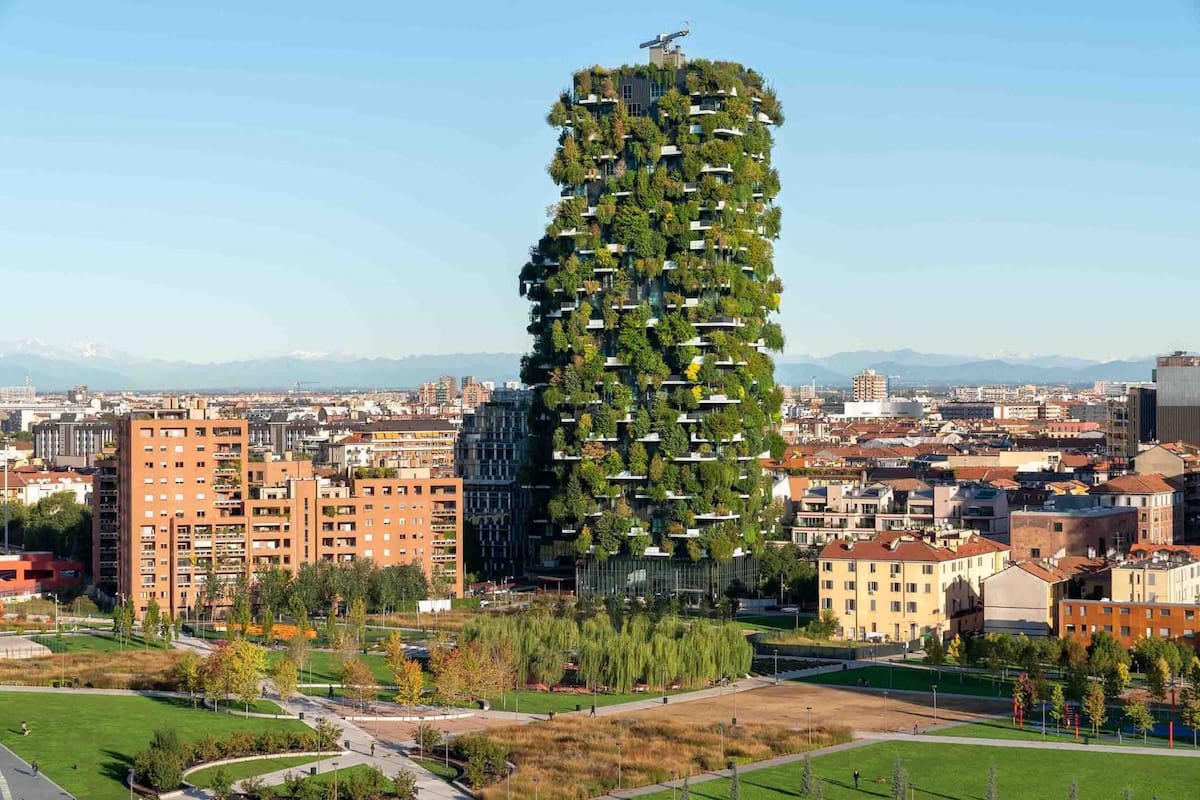
Description:
The Bosco Verticale (Vertical Forest) is a pair of residential towers in Milan that are wrapped in greenery. Designed by Stefano Boeri Architects, these towers feature more than 900 trees and 20,000 plants, effectively creating an urban forest in the sky.
Sustainable Features:
- Dense vegetation acts as a natural air filter, improving air quality.
- The building’s structure is designed to support vertical gardens, which reduce the urban heat island effect.
- Integrated irrigation systems use greywater to sustain the vegetation, conserving water resources.
- Reduces noise pollution and provides natural insulation for residents.
Environmental Impact:
Bosco Verticale is a living example of biophilic design, promoting biodiversity and reconnecting residents with nature in an urban environment.
One Central Park, Sydney, Australia
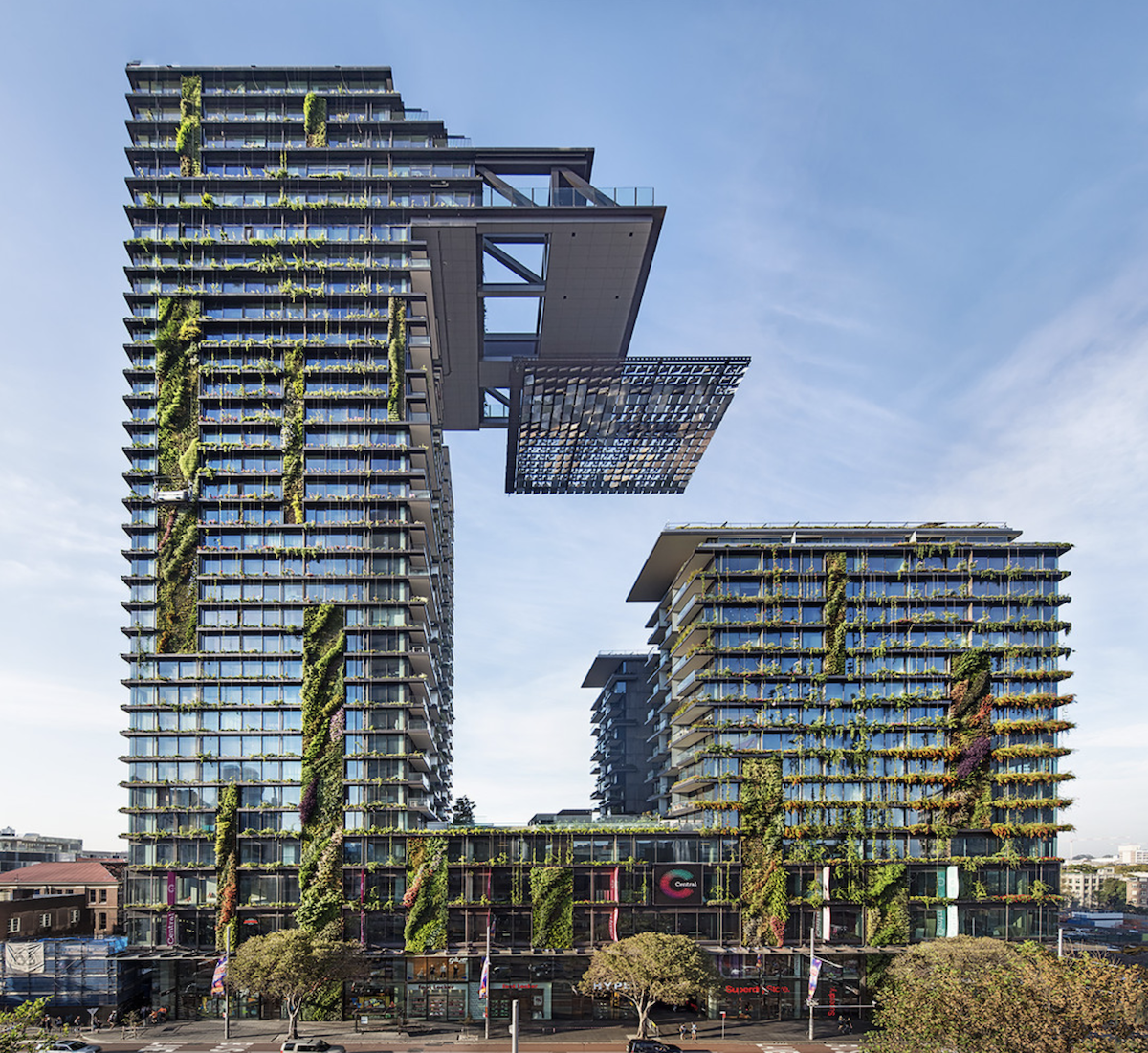
Description:
One Central Park is a mixed-use building known for its lush vertical gardens, designed by architect Jean Nouvel in collaboration with botanist Patrick Blanc.
The building’s gardens climb up the façade, making it one of the greenest residential complexes in Australia.
Sustainable Features:
- Vertical gardens spanning over 50,000 plants across the building’s façade.
- Heliostat system that redirects sunlight to areas shaded by other buildings, optimizing natural light distribution.
- Rainwater harvesting and recycling system to maintain the greenery.
- On-site power generation through cogeneration plants reduces reliance on the grid.
Environmental Impact:
The building achieves energy savings and has won numerous awards for its integration of nature within an urban setting, contributing to lower CO2 emissions and improved biodiversity.
The Edge, Amsterdam, Netherlands
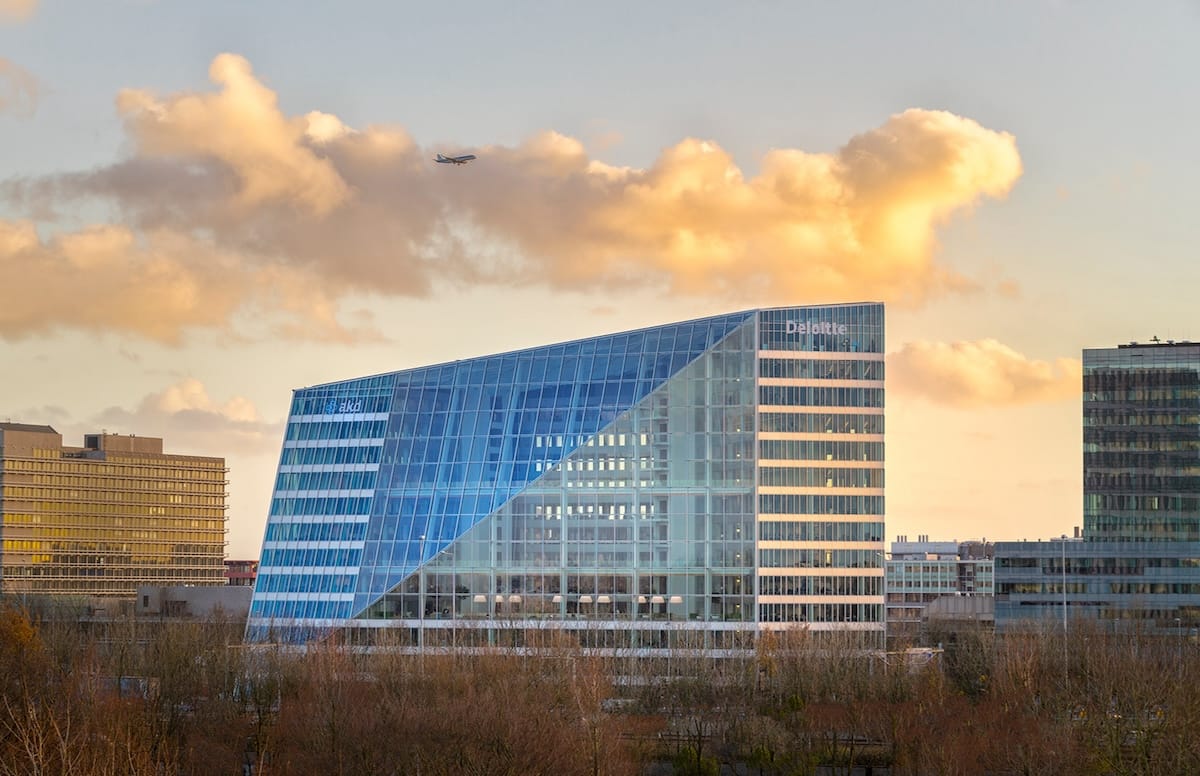
Description:
The Edge, developed by PLP Architecture, is one of the most sustainable office buildings in the world. Located in Amsterdam, it incorporates smart technology and renewable energy systems to achieve its sustainability goals.
Sustainable Features:
- Solar panels cover the roof and southern walls, supplying renewable energy to the building.
- Rainwater harvesting system used for irrigation and toilets.
- Smart lighting and ventilation systems powered by sensors to reduce energy consumption.
- Recycled and eco-friendly materials used in construction.
Environmental Impact:
The Edge has achieved a BREEAM (Building Research Establishment Environmental Assessment Method) certification score of 98.36%, making it one of the greenest commercial buildings globally.
Bullitt Center, Seattle, USA
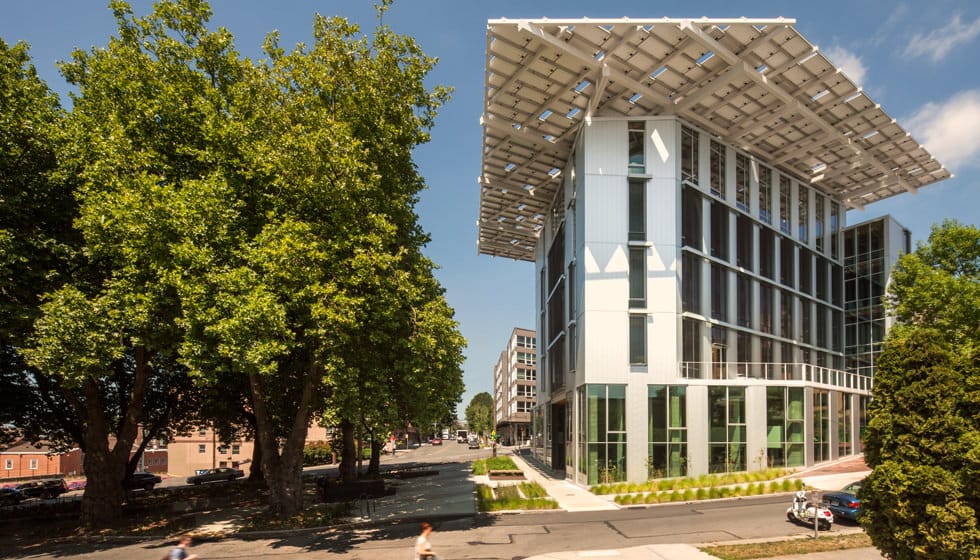
Description:
The Bullitt Center in Seattle is designed to be the greenest commercial building in the world, following the principles of the Living Building Challenge. It serves as a model for net-zero energy, water, and waste.
Sustainable Features:
- Solar panels generate more energy than the building consumes, making it net-positive.
- Rainwater collection and greywater recycling meet 100% of the building’s water needs.
- Composting toilets and non-toxic building materials promote sustainability.
- Passive heating and cooling systems to maintain comfortable indoor temperatures.
Environmental Impact:
The Bullitt Center sets a new benchmark for energy-efficient office buildings, demonstrating that it's possible to create a completely self-sustaining structure.
CopenHill, Copenhagen, Denmark
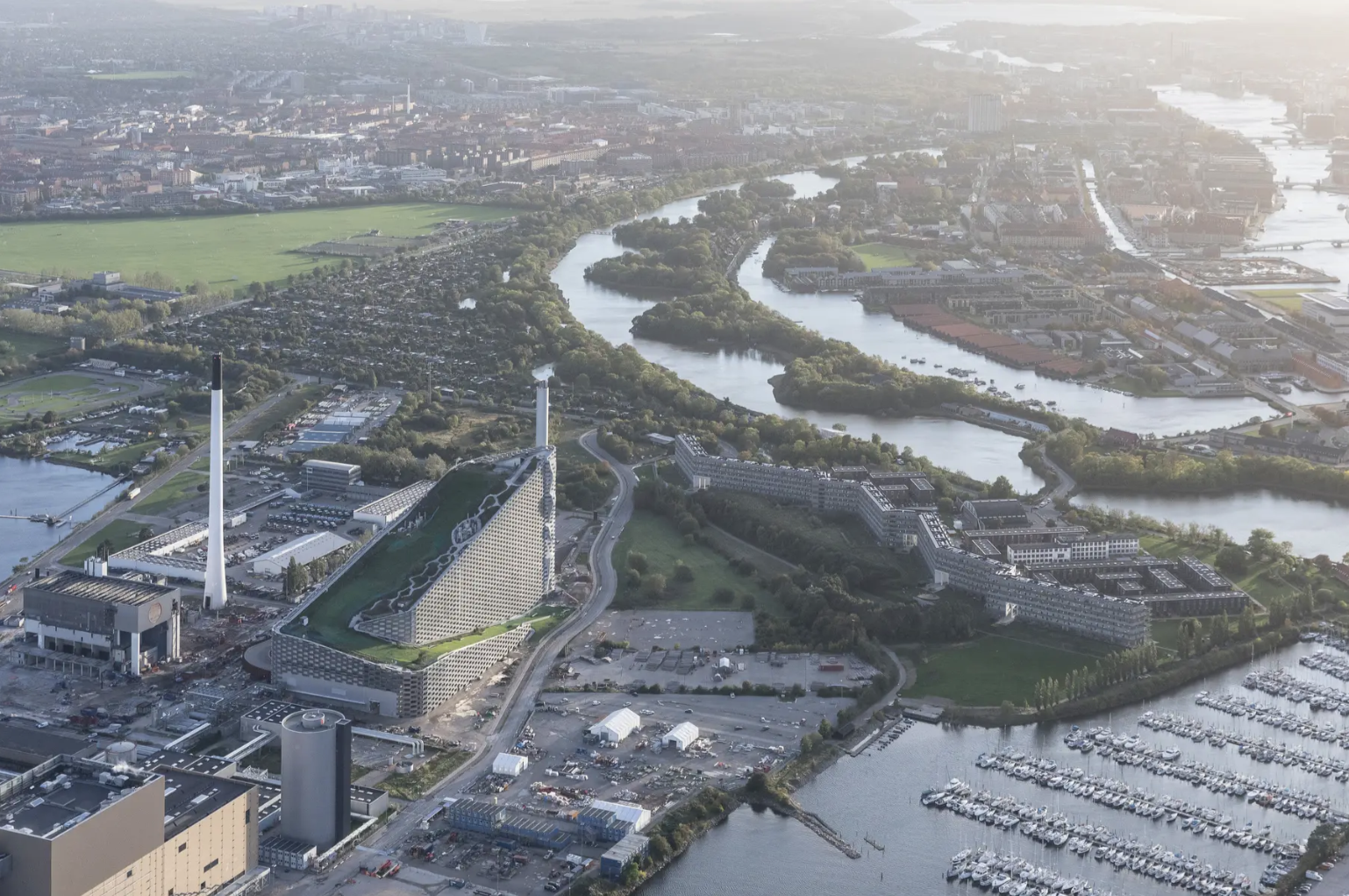
Description:
CopenHill, designed by Bjarke Ingels Group (BIG), is a waste-to-energy plant with a ski slope on its roof. It is not just a power plant but a recreational space that combines industry with leisure in an eco-friendly manner.
Sustainable Features:
- Converts 440,000 tons of waste into clean energy annually, providing power and heat to homes in Copenhagen.
- Incorporates a rooftop green space, hiking trail, and a ski slope, promoting urban recreation.
- Advanced waste treatment technologies ensure minimal emissions.
- Recycled water used to cool down waste incineration processes.
Environmental Impact:
CopenHill reduces landfill waste and greenhouse gas emissions while offering residents a green recreational space in an industrial area.
Subscribe on Apple Podcasts
Subscribe on Spotify
Subscribe on Amazon Music
Masdar City, Abu Dhabi, UAE
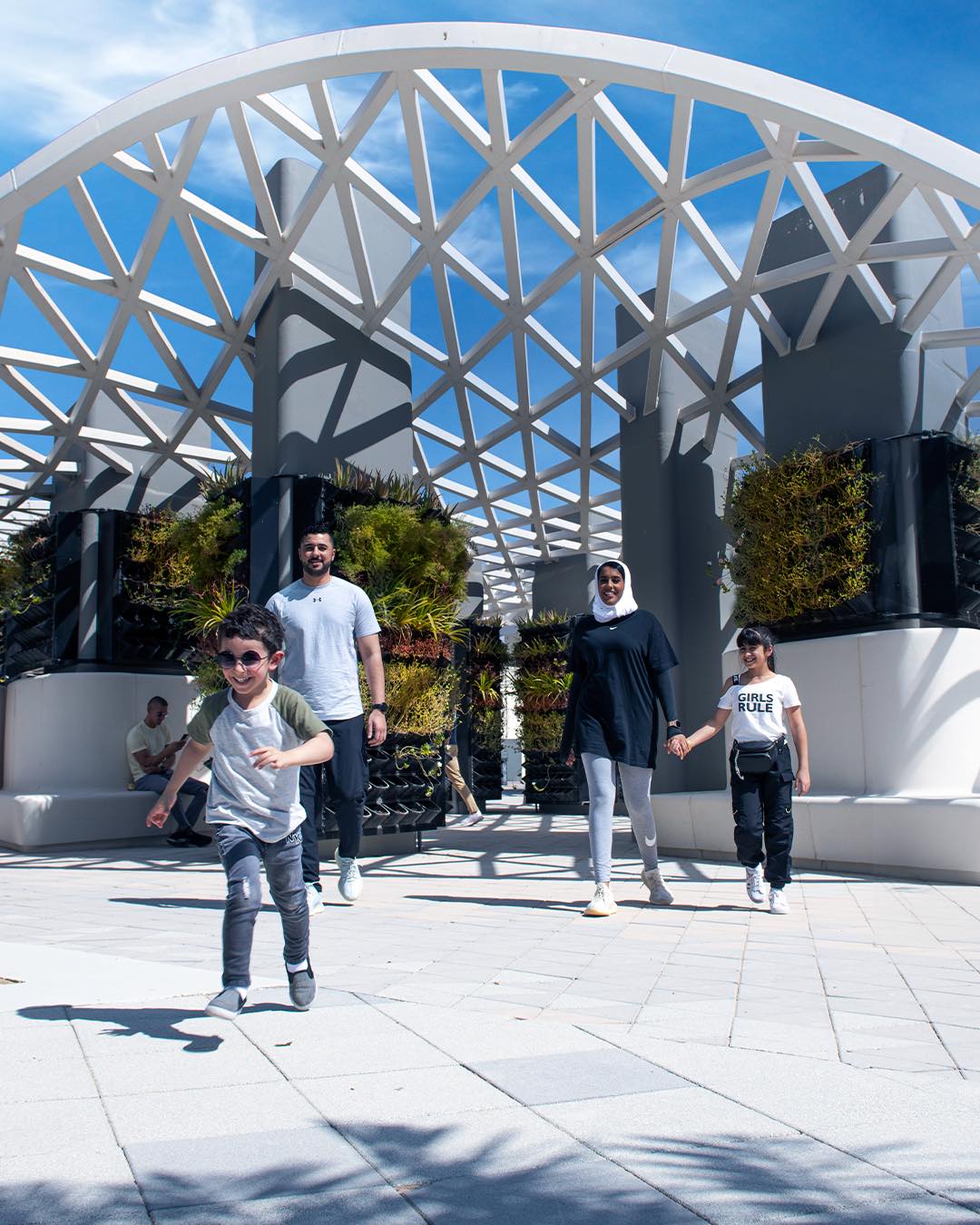
Description:
Masdar City is a planned urban community designed to be one of the most sustainable cities in the world. It integrates renewable energy and innovative building design to achieve its eco-friendly objectives.
Sustainable Features:
- Powered by a 10-megawatt solar power plant and individual rooftop solar panels.
- Buildings designed to maximize natural ventilation and minimize energy consumption.
- Use of automated Personal Rapid Transit (PRT) system to reduce car usage and emissions.
- Recycling programs for water, waste, and materials.
Environmental Impact:
Masdar City serves as a testing ground for sustainable urban development, promoting clean energy and sustainable living practices in a desert environment.
The Crystal, London, United Kingdom
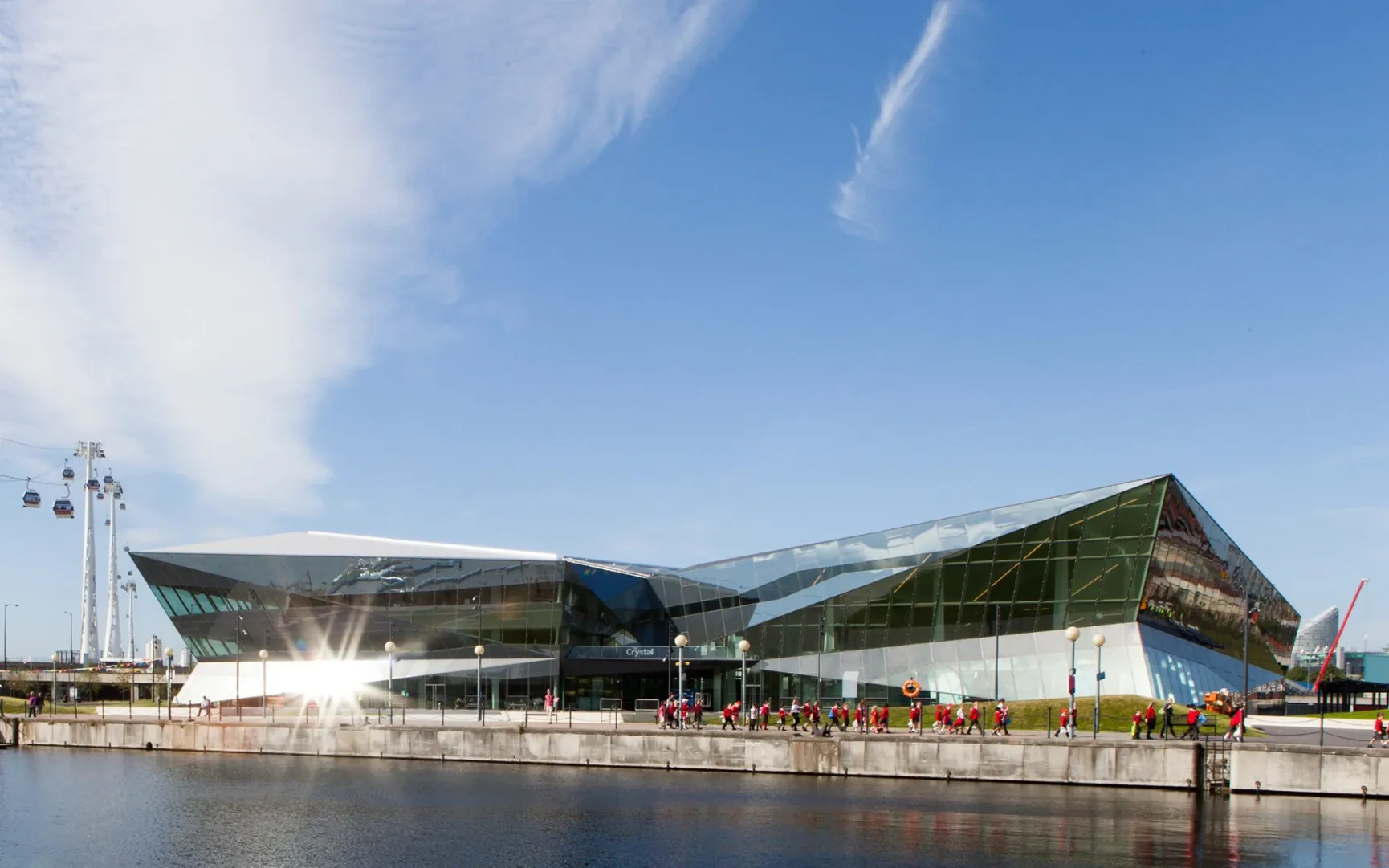
Description:
The Crystal, located in London, is one of the world’s most sustainable buildings. Designed by Wilkinson Eyre Architects, this all-electric building serves as an exhibition space dedicated to sustainable urban development.
Sustainable Features:
- Powered entirely by solar energy and ground-source heat pumps.
- Rainwater harvesting systems and blackwater recycling ensure efficient water use.
- Intelligent building management system that optimizes energy usage and monitors air quality.
- Achieved both BREEAM Outstanding and LEED Platinum certifications.
Environmental Impact:
The Crystal serves as an educational hub for sustainable urban development, showcasing how technology and design can work together to minimize environmental impact.
Manitoba Hydro Place, Winnipeg, Canada
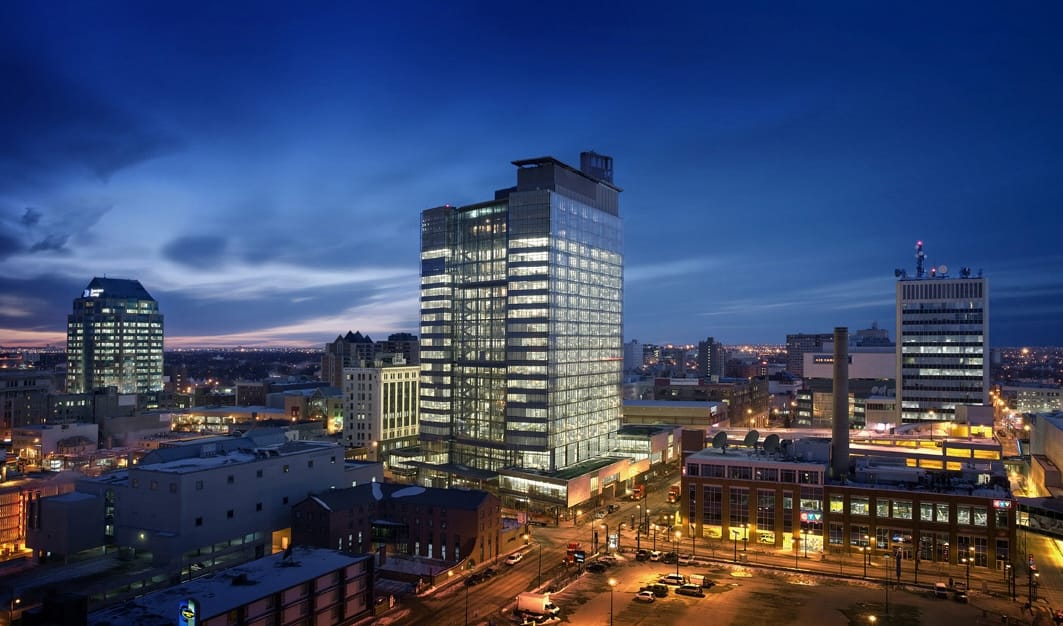
Description:
Manitoba Hydro Place is a pioneering example of sustainable office architecture in Canada. The building is designed to function in extreme weather conditions while maintaining energy efficiency.
Sustainable Features:
- Incorporates passive solar design, natural ventilation, and geothermal energy for heating and cooling.
- Triple-glazed windows to minimize heat loss during winter and keep interiors cool during summer.
- South atrium acts as a thermal buffer, capturing solar heat in winter.
- Rainwater collection systems provide water for toilets and irrigation.
Environmental Impact:
Manitoba Hydro Place consumes 66% less energy compared to conventional office buildings, setting a benchmark for cold-climate sustainable design.
Parkroyal Collection Pickering, Singapore
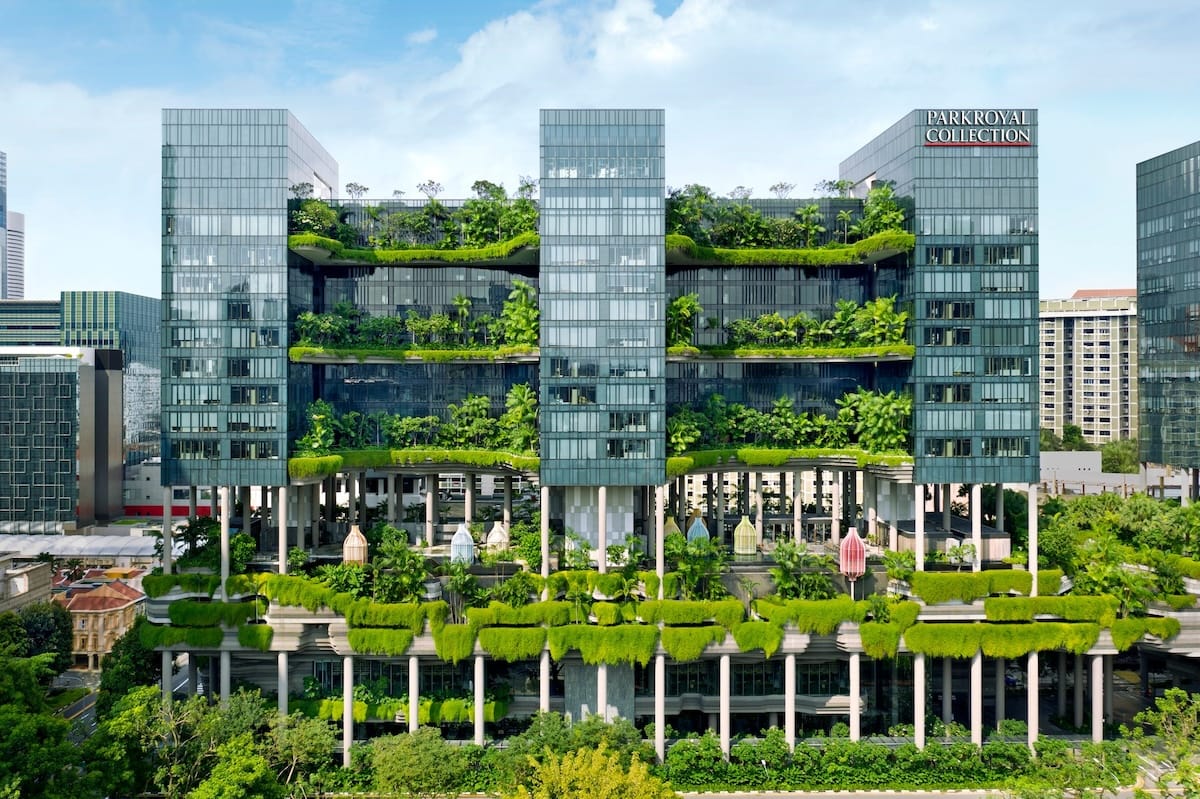
Description:
The Parkroyal Collection Pickering in Singapore is a luxury hotel that seamlessly integrates lush greenery with its architectural design, making it one of the greenest hotels in the world.
Sustainable Features:
- Over 15,000 square meters of sky gardens, reflecting pools, waterfalls, and green walls.
- Drip irrigation systems and rainwater harvesting for efficient water use.
- Extensive use of sustainable materials and energy-efficient lighting.
- Achieved BCA Green Mark Platinum certification for sustainability.
Environmental Impact:
This hotel exemplifies biophilic design, creating a green sanctuary in the urban core of Singapore, reducing energy consumption while improving guest well-being.
Edge Technologies HQ, Berlin, Germany
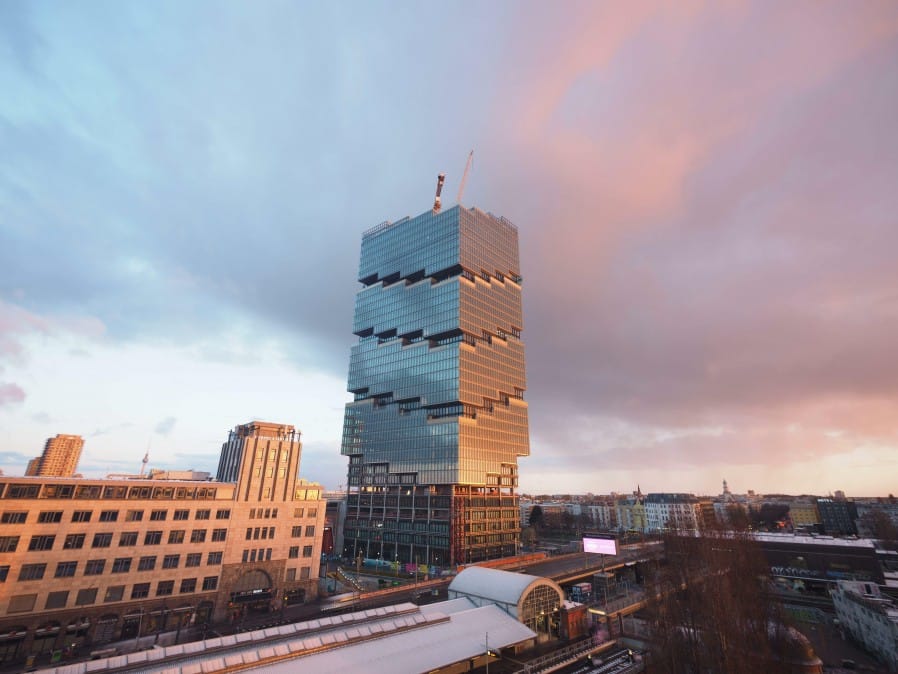
Description:
Edge Technologies HQ in Berlin is a next-generation office building designed for energy efficiency, wellness, and innovation. It is part of a series of "Edge" buildings known for their smart technology and sustainable design.
Sustainable Features:
- Intelligent building management system that monitors and adjusts lighting, HVAC, and water usage based on occupancy.
- Solar panels and rainwater harvesting for renewable energy and water conservation.
- Biophilic design elements that enhance indoor air quality and promote occupant well-being.
- Recycled materials used throughout the construction process.
Environmental Impact:
The building is one of the greenest office spaces in Europe, designed to be energy-positive, meaning it generates more energy than it consumes.








